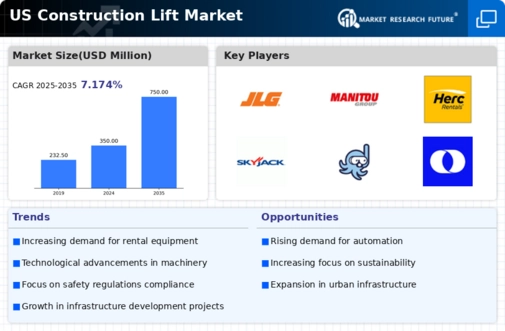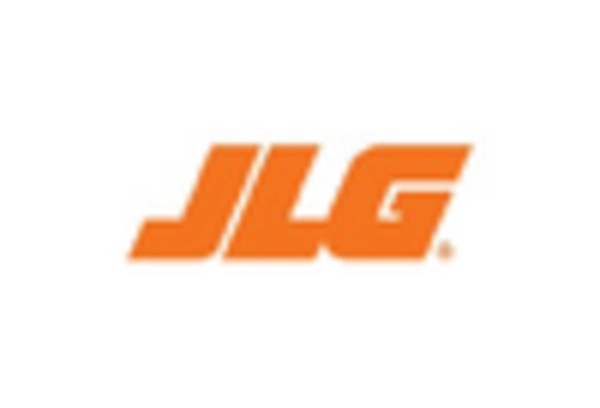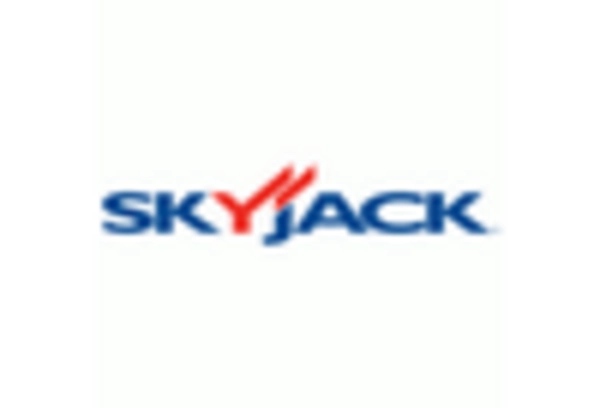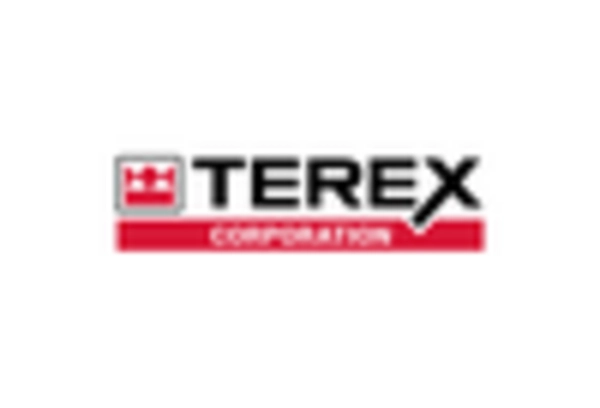Focus on Safety Standards
Safety remains a paramount concern in the construction lift market, influencing purchasing decisions and operational practices. The US construction industry adheres to stringent safety regulations, which necessitate the use of compliant lifting equipment. As companies strive to minimize workplace accidents and enhance worker safety, the demand for construction lifts that meet or exceed safety standards is likely to increase. This focus on safety not only drives sales but also encourages manufacturers to innovate and improve their product offerings. The construction lift market is thus positioned to grow as firms prioritize safety compliance, leading to a potential increase in market share for those providing reliable and safe lifting solutions.
Technological Integration
The integration of advanced technologies into construction lifts is transforming the market landscape. Innovations such as IoT connectivity, automation, and telematics are enhancing the functionality and efficiency of lifting equipment. These technologies allow for real-time monitoring, predictive maintenance, and improved operational efficiency, which are increasingly sought after by construction firms. As the construction industry embraces digital transformation, the construction lift market is likely to see a surge in demand for technologically advanced lifts. This trend may lead to a competitive advantage for manufacturers who can offer smart lifting solutions that align with the evolving needs of construction projects.
Shift Towards Rental Models
The construction lift market is witnessing a shift towards rental models as contractors seek to optimize costs and enhance flexibility. Renting construction lifts allows companies to access the latest equipment without the burden of ownership costs, which can be particularly advantageous for short-term projects. This trend is likely to gain momentum as more construction firms recognize the financial benefits of renting over purchasing. Consequently, rental companies are expanding their fleets to meet the growing demand, which may lead to increased market penetration for construction lifts. This shift not only influences purchasing patterns but also encourages manufacturers to develop rental-friendly models that cater to this evolving market dynamic.
Rising Construction Activities
The construction lift market experiences a notable boost due to the increasing volume of construction activities across various sectors in the US. With the construction industry projected to grow at a CAGR of approximately 4.5% from 2025 to 2030, the demand for construction lifts is expected to rise correspondingly. This growth is driven by urbanization, infrastructure development, and residential projects, which necessitate efficient vertical transportation solutions. As construction companies seek to enhance productivity and safety on job sites, the adoption of advanced lifting equipment becomes imperative. Consequently, the construction lift market is likely to benefit from this upward trend, as more contractors invest in modern lifting technologies to meet project demands.
Increased Investment in Infrastructure
The US government has committed to substantial investments in infrastructure development, which is expected to significantly impact the construction lift market. Initiatives aimed at upgrading transportation networks, bridges, and public facilities are likely to create a surge in demand for construction lifts. As these projects require efficient vertical transportation solutions, the market is poised for growth. The anticipated allocation of billions of dollars towards infrastructure projects over the next few years suggests a robust pipeline of opportunities for construction lift manufacturers. This influx of investment may stimulate innovation and competition within the market, further driving advancements in lift technology.

















Leave a Comment